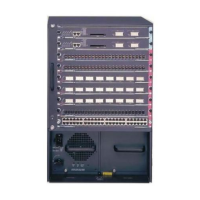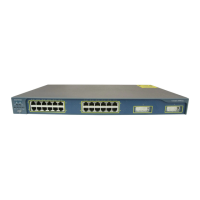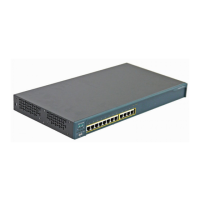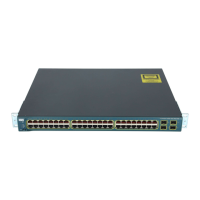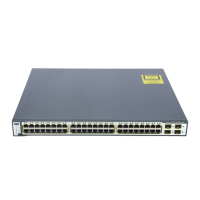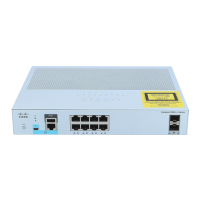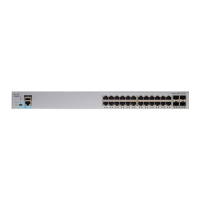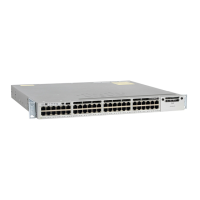4-2
Catalyst 6500 Series Switch Software Configuration Guide—Release 8.7
OL-8978-04
Chapter 4 Configuring Ethernet, Fast Ethernet, Gigabit Ethernet, and 10-Gigabit Ethernet Switching
Understanding How Ethernet Works
These sections describe Ethernet:
• Switching Frames Between Segments, page 4-2
• Building the Address Table, page 4-2
• Understanding Port Negotiation, page 4-2
Switching Frames Between Segments
Each Ethernet port on a Catalyst 6500 series switch can connect to a single workstation or server or to
a hub through which workstations or servers connect to the network.
Ports on a typical Ethernet hub all connect to a common backplane within the hub, and the bandwidth of
the network is shared by all devices that are attached to the hub. If two stations establish a session that
uses a significant level of bandwidth, the network performance of all other stations that are attached to
the hub is degraded.
To reduce degradation, the switch treats each port as an individual segment. When the stations on
different ports need to communicate, the switch forwards the frames from one port to the other port at
wire speed to ensure that each session receives full bandwidth.
To switch frames between ports efficiently, the switch maintains an address table. When a frame enters
the switch, it associates the MAC address of the sending station with the port on which it was received.
Building the Address Table
Catalyst 6500 series switches build the address table by using the source address of the received frames.
When the switch receives a frame for a destination address that is not listed in its address table, it floods
the frame to all ports of the same VLAN except for the port that received the frame. When the destination
station replies, the switch adds its relevant source address and port ID to the address table. The switch
then forwards subsequent frames to a single port without flooding to all ports.
The address table can store at least 32,000 address entries without flooding any entries. The switch uses
an aging mechanism, which is defined by a configurable aging timer, so if an address remains inactive
for a specified number of seconds, it is removed from the address table.
Understanding Port Negotiation
Note The set port negotiation command is supported on Gigabit Ethernet ports only; it is not supported on
the WS-X6316-GE-TX and WS-X6516-GE-TX modules. If a port does not support this command, this
message appears: “Feature not supported on Port N/N,” where N/N is the module and the port number.
Note You cannot configure port negotiation on 1000BASE-TX (copper) Gigabit Ethernet ports in this release.
If you insert a 1000BASE-TX GBIC in the port that was previously configured as negotiation disabled,
the negotiation-disabled setting is ignored and the port operates in negotiation-enabled mode.
